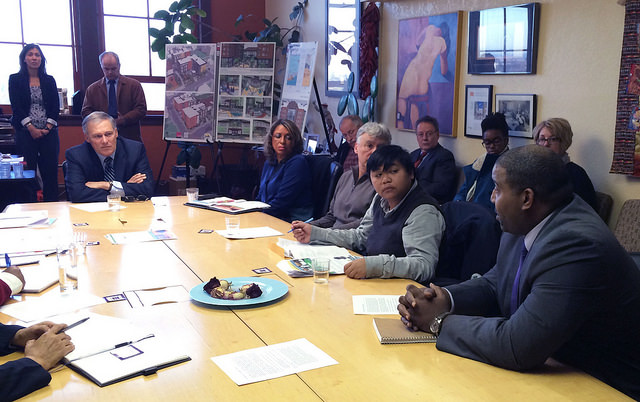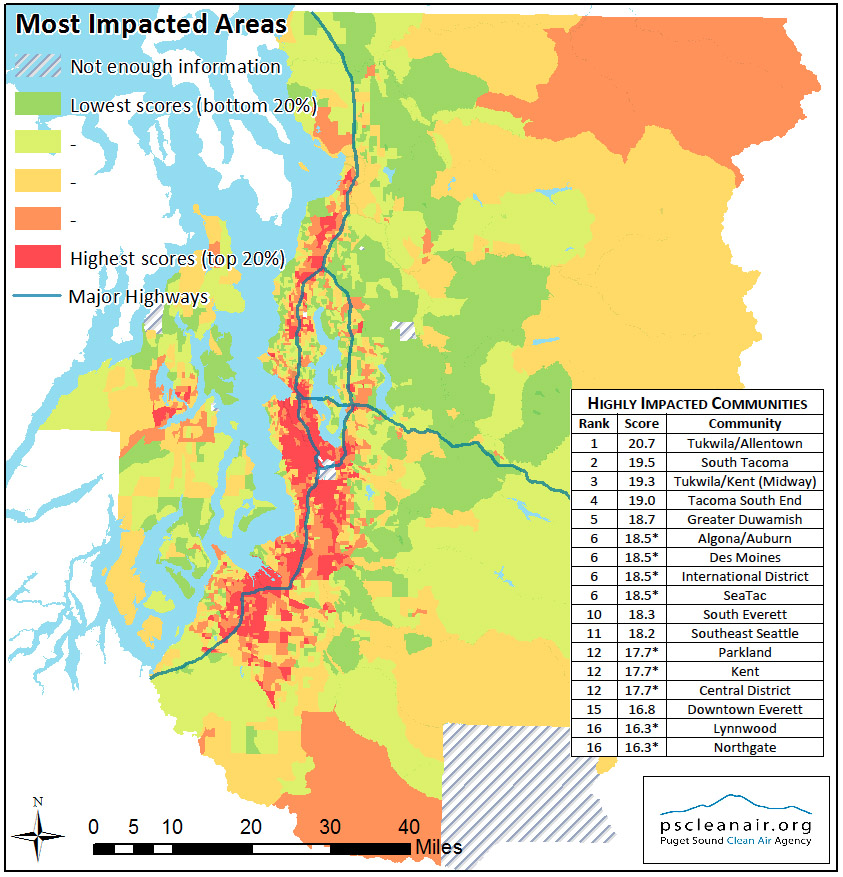
If Washington ever passes a carbon tax, how should the money collected get spent in local communities?
Seattle’s Sightline Institute issued a paper this week arguing that immigrants and communities of color should get the biggest boost from any carbon charge revenue that the state generates.
The group says that the neighborhoods with the highest pollution impacts should receive the highest investments from carbon taxes and other charges to polluters. According to a number of regional studies, those neighborhoods highly impacted by pollution are often poor communities, communities of color and immigrant communities.
Sightline also advocated for the creation of screening tools to better determine which neighborhoods would need the help the most.
The report cited the Puget Sound Clean Air Agency, which found that the Tukwila neighborhood of Allentown — tucked between State Route 599 and Interstate 5 — is the community in the Puget Sound region most impacted by pollution and other health risks. Number two on the list is South Tacoma, and the Tukwila turns up again in position 3.
Tukwila has the most diverse school districts in the nation, according to a New York Times analysis, and is home to many immigrants.

The paper cites California as an example of a state that has used its pollution charges to address social inequities.
Other states have recognized the imperative and the opportunity to stop pollution and invest in their most vulnerable communities. For example, California capped pollution and is directing several hundred millions of dollars per year to invest in clean energy, affordable housing, and public transit projects that will benefit highly-impacted communities. In order to direct investments to the communities who need it the most, California developed a screening tool for identifying the most deserving neighborhoods.
Gov. Jay Inslee last week announced a plan to cap an organization’s greenhouse gas emissions, reported Crosscut, but the governor’s plan won’t include a tax or charge on pollution like he proposed in December. His proposals for a carbon charge died this year in the Legislature.
Sightline’s report is available on its website.

